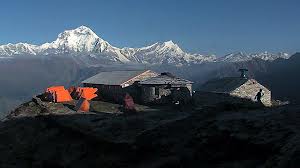 |
| Airline Restrictions on Baggage |
Items and materials that may be commonplace and necessary at home or in the workplace are sometimes banned inside aircrafts because of the dangers they pose to both passengers and crew. It therefore becomes important to check with the airline which items they allow as carry-on luggage or as checked baggage, or banned altogether.
The following are the categories of items proscribed by the Transport Security Administration from being boarded in aircraft cabins:
Explosives and firearms. Matches, sparklers, other fireworks, flares, gunpowder, ammunition or other ordnance, blasting caps, dynamite, loaded firearms.
Other weapons. Knives of any kind, throwing stars, swords, or other items used in martial arts competitions. Rules in other countries will differ on transporting knives and other weapons.
Gases and pressure containers. Flammable aerosols like hair spray, spray paint or insect repellant; carbon dioxide cartridges, oxygen tanks (scuba or medical), mace, tear gas, pepper spray, self-inflating rafts, and deeply refrigerated gases such as liquid nitrogen.
Flammable liquids and solids. Gasoline, propane, butane and other fuels, lights with flammable reservoirs, matches, flammable paints, paint thinners, some cleaning solvents, some adhesives, cigarette lighters, and lighter fluid. Personal care items such as flammable perfume and such may be carried on board in limited quantities.
Oxidizers and organic peroxides. Bleach, nitric acid, fertilizers, swimming pool or spa chemicals, and fiberglass repair kits.
Poisons. Weed killers, pesticides rodent poisons, arsenic and cyanides.
Infectious materials. Medical laboratory specimens, viral organisms, bacterial cultures.
Corrosives. Drain cleaners, car batteries, wet cell batteries, acids, alkalis, lye, mercury.
Organics. Fiberglass resins, peroxides.
Radioactive materials. Smoke detectors, radioactive pharmaceuticals, and other radioactive materials.
Dry ice (frozen carbon dioxide). Up to four pounds (1.8 kg) is allowed on board for packing perishables, providing that the package is vented.
Magnetic materials. Strong magnets such as those in loudspeakers and laboratory equipment.
Other items. Wet-cell batteries, chemical oxygen generators (used or unused) or any equipment containing fuel or other flammable liquids.
In light of 9/11, TSA also began regulating the carriage of the following items on board aircrafts:
sition, including carpet knives and box cutters (and spare blades), any device with a folding or retractable blade, ice picks, straight razors, and metal scissors with pointed tips.
Corkscrews.
Lighters, lighter fluid, and strike-anywhere matches. However, up to four books of safety matches are allowable.
Baseball and softball bats.
Golf clubs.
Pool cues.
Ski poles.
Hockey sticks.
What is allowed and what is not allowed varies among airline companies. Just to be sure, always check with the air carrier as to what kind of baggage they allow before booking.




